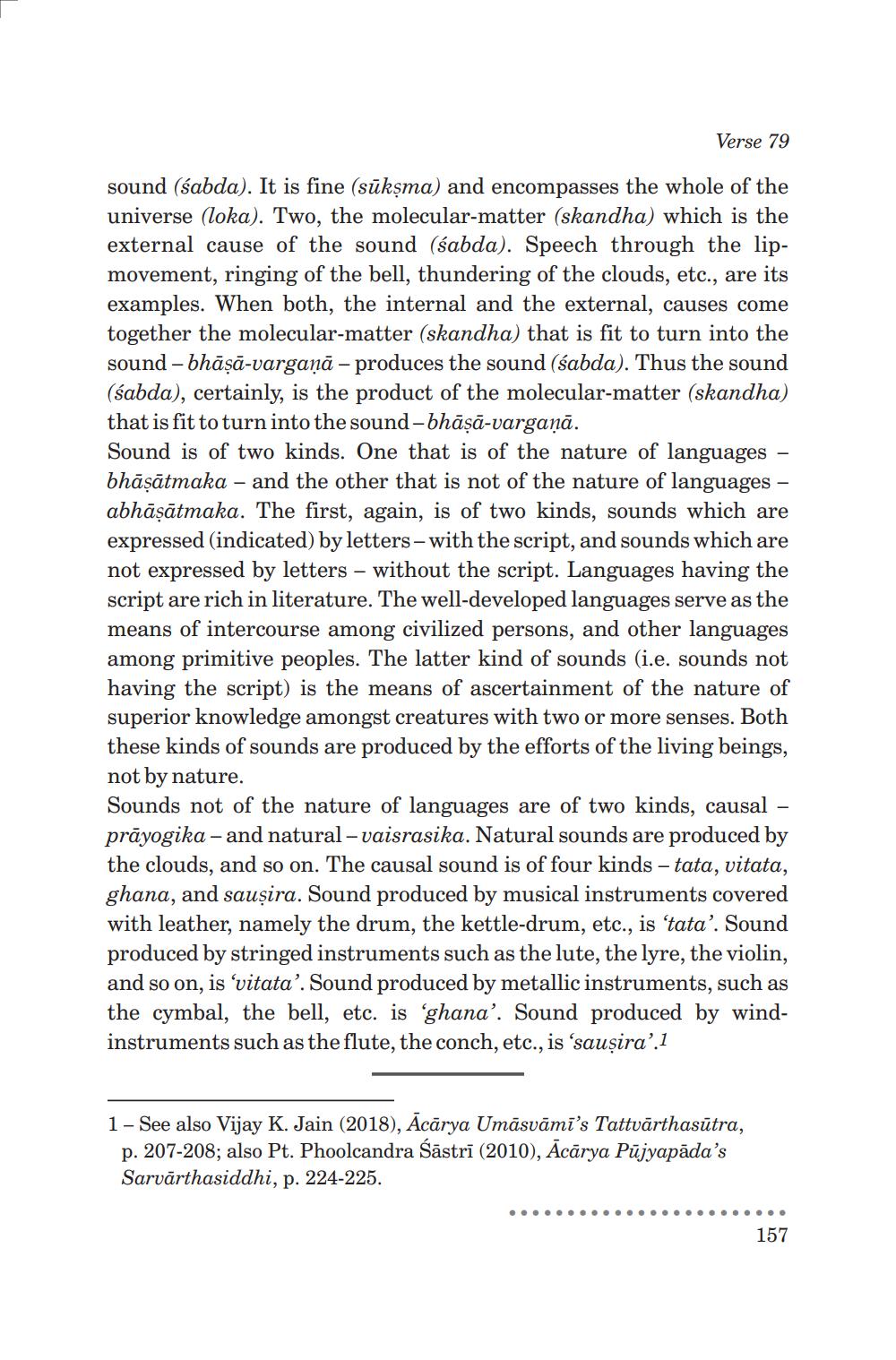________________ Verse 79 sound (sabda). It is fine (suksma) and encompasses the whole of the universe (loka). Two, the molecular-matter (skandha) which is the external cause of the sound (sabda). Speech through the lipmovement, ringing of the bell, thundering of the clouds, etc., are its examples. When both, the internal and the external, causes come together the molecular-matter (skandha) that is fit to turn into the sound - bhasa-vargana - produces the sound (sabda). Thus the sound (sabda), certainly, is the product of the molecular-matter (skandha) that is fit to turn into the sound -bhasa-vargana. Sound is of two kinds. One that is of the nature of languages - bhasatmaka - and the other that is not of the nature of languages - abhasatmaka. The first, again, is of two kinds, sounds which are expressed (indicated) by letters - with the script, and sounds which are not expressed by letters - without the script. Languages having the script are rich in literature. The well-developed languages serve as the means of intercourse among civilized persons, and other languages among primitive peoples. The latter kind of sounds (i.e. sounds not having the script) is the means of ascertainment of the nature of superior knowledge amongst creatures with two or more senses. Both these kinds of sounds are produced by the efforts of the living beings, not by nature. Sounds not of the nature of languages are of two kinds, causal - prayogika - and natural - vaisrasika. Natural sounds are produced by the clouds, and so on. The causal sound is of four kinds - tata, vitata, ghana, and sausira. Sound produced by musical instruments covered with leather, namely the drum, the kettle-drum, etc., is 'tata'. Sound produced by stringed instruments such as the lute, the lyre, the violin, and so on, is 'vitata'. Sound produced by metallic instruments, such as the cymbal, the bell, etc. is 'ghana'. Sound produced by windinstruments such as the flute, the conch, etc., is 'sausira'.1 1- See also Vijay K. Jain (2018), Acarya Umasvami's Tattvarthasutra, p. 207-208; also Pt. Phoolcandra Sastri (2010), Acarya Pujyapada's Sarvarthasiddhi, p. 224-225. . . . . . . .. . . . . . . 157




